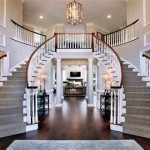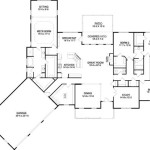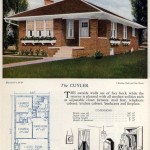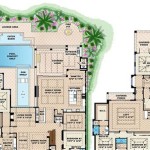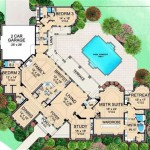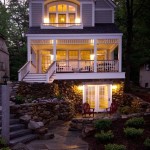```html
Custom Home Plans With Basement: Expanding Your Living Space
The allure of custom home plans with a basement stems from their ability to significantly enhance living space and functionality. Incorporating a basement into a new home design provides a versatile area adaptable to a multitude of needs, from recreational purposes to practical storage solutions. Careful planning and consideration are crucial to maximize the potential benefits a basement offers and mitigate potential challenges associated with its construction and utilization.
Custom home plans allow for a tailored approach to basement design, ensuring that the space complements the architectural style of the home and meets the specific requirements of the homeowners. Unlike pre-designed plans, custom designs provide the flexibility to optimize the basement's layout, size, and features according to individual preferences and budgetary constraints.
The decision to include a basement in a custom home plan should be carefully evaluated, considering factors such as site conditions, soil composition, local building codes, and the overall cost-benefit analysis. A well-designed basement can add considerable value to a property, but improper planning or execution can lead to costly problems and diminish the enjoyment of the space.
Factors Influencing Custom Basement Design
Several key factors influence the design and implementation of custom home plans with basements. These factors must be thoroughly assessed during the planning phase to ensure a successful outcome. The soil composition of the building site is paramount. Soil tests can reveal the presence of expansive clay or other unstable materials, which may necessitate specialized foundation designs and waterproofing measures. Water table levels must also be considered to prevent potential water intrusion into the basement. High water tables may require the installation of sump pumps and drainage systems to maintain a dry and usable space.
Local building codes and regulations dictate specific requirements for basement construction, including minimum ceiling heights, egress windows, and fire safety features. It is essential to comply with these regulations to ensure the safety and legality of the basement. Furthermore, the intended use of the basement will significantly impact its design. A basement intended for use as a living space, such as a family room or home theater, will require different considerations compared to a basement primarily used for storage.
The overall budget for the custom home project will also influence the design and features of the basement. The size of the basement, the level of finishing, and the materials used will all impact the total cost. A detailed cost analysis should be conducted to determine the feasibility of desired features and ensure that the basement design aligns with the homeowner's budget.
Benefits of Custom Designed Basements
Custom designed basements offer numerous benefits, extending the functionality and value of the home. One significant advantage is the ability to create additional living space tailored to specific needs. This can include a home office, a guest suite, a recreational area, or a home gym. The flexibility of custom design allows homeowners to create a space that perfectly suits their lifestyle and preferences.
Basements also provide ample storage space, which can be particularly valuable in homes with limited above-ground storage. A well-organized basement can house seasonal items, holiday decorations, and other belongings, helping to declutter the main living areas of the home. The basement can also be used to house mechanical systems, such as furnaces, water heaters, and electrical panels, freeing up valuable space on the main floors.
Custom home plans with basements can also enhance the energy efficiency of the home. The earth surrounding the basement walls provides insulation, helping to regulate temperature and reduce energy consumption. This can lead to lower heating and cooling costs, particularly in climates with extreme temperature variations. A properly insulated basement can also reduce noise transmission, creating a quieter and more comfortable living environment.
Furthermore, a well-designed and finished basement can significantly increase the resale value of the home. Potential buyers often view a finished basement as a valuable asset, adding usable square footage and enhancing the overall appeal of the property. The design choices should consider both immediate needs and potential future buyers. Neutral color palettes and versatile layouts are often preferred to maximize appeal to a broader range of potential buyers.
Key Considerations for Basement Construction
The construction of a basement requires careful attention to detail and adherence to established building practices. Proper waterproofing is essential to prevent water intrusion and maintain a dry and usable space. This typically involves applying a waterproof membrane to the exterior of the foundation walls and installing a drainage system to direct water away from the foundation. Sump pumps are often used in areas with high water tables to remove any water that may accumulate around the foundation.
Adequate ventilation is also crucial to prevent moisture buildup and mold growth. Basements should be equipped with ventilation systems to circulate air and reduce humidity levels. Dehumidifiers can also be used to control moisture in damp environments. Proper insulation is essential for maintaining comfortable temperatures and reducing energy consumption. Insulating the basement walls and ceiling can help to prevent heat loss in the winter and heat gain in the summer.
Egress windows are a critical safety feature in basements used as living spaces. Egress windows provide a means of escape in the event of a fire or other emergency. Building codes typically require that basements used as bedrooms have an egress window that meets specific size and accessibility requirements. Proper lighting is essential for creating a well-lit and inviting basement. A combination of natural light and artificial lighting should be used to illuminate the space and enhance its functionality. The placement of lighting fixtures should be carefully considered to avoid glare and create a comfortable ambiance.
Planning for plumbing and electrical systems is also crucial during the construction phase. The location of plumbing fixtures, such as toilets, sinks, and showers, should be carefully planned to ensure proper drainage and water supply. Adequate electrical outlets and wiring should be installed to accommodate the intended use of the basement. It is essential to consult with qualified professionals to ensure that all plumbing and electrical systems are installed safely and in accordance with local building codes.
Finally, consider the potential for future renovations. Leaving access panels to plumbing and electrical systems can greatly simplify future maintenance and remodeling. Planning for the future can prevent costly and disruptive renovations later on. The addition of a full bathroom or additional egress points can also increase the basement's functionality and value over time.
Careful planning, attention to detail, and adherence to building codes are crucial for creating a safe, comfortable, and functional basement that enhances the value and enjoyment of the home. Consulting with experienced architects, engineers, and contractors can ensure a successful basement construction project.
```
P 801 Finished Basement Floor Plan For The Paoletti House

32 X44 Open House Plan With Basement Google Search Ranch Plans Custom Home
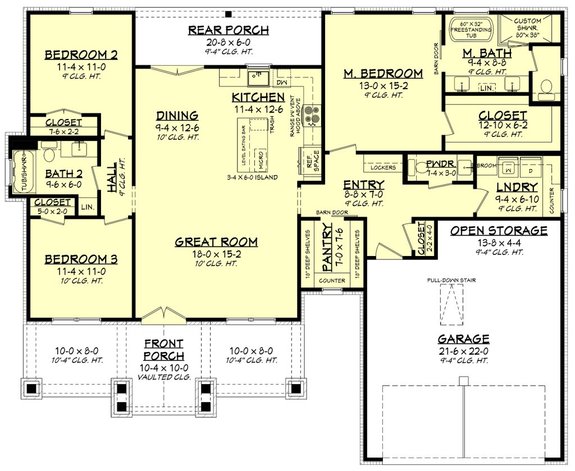
Versatile Spacious House Plans With Basements Houseplans Blog Com

Walkout Basement Design Ideas S Remodel And Decor House Designs Exterior Plans

Floor Plan With Basement Car Parking Best Floorplan Architectural Hire A Make My House Expert

Farmhouse Style House Plans For The Modern Family

Versatile Spacious House Plans With Basements Houseplans Blog Com

Small Cottage Plan With Walkout Basement Floor

House Plans Floor W In Law Suite And Basement Apartement

Basement Floor Plans

